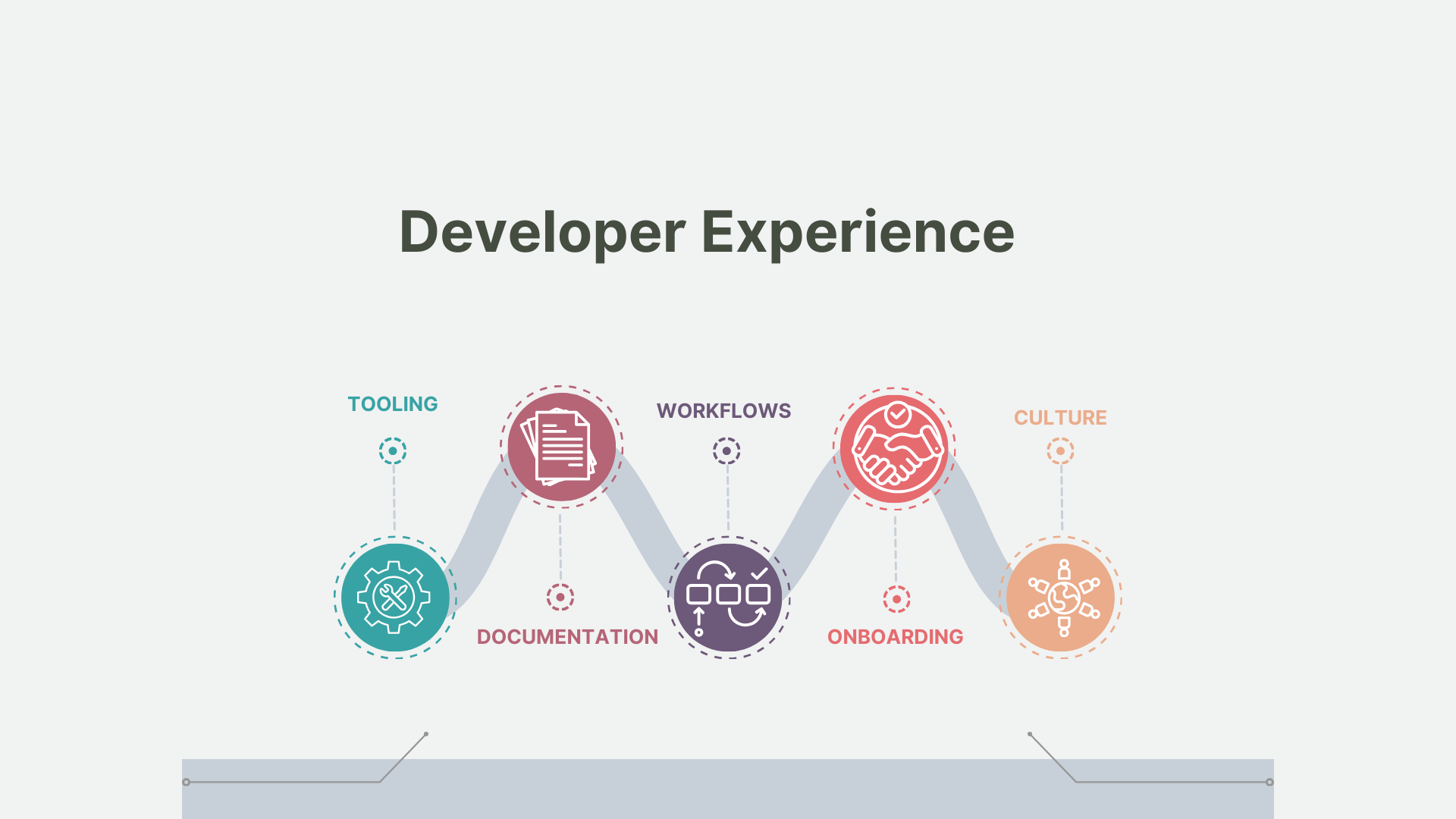Introduction
The diverse challenges facing today's markets have led to a need for software to be created more reliably, economically, and rapidly than ever. Developers are acutely aware of how critical time is during their working day; however, being in a state of flow can lead to the most efficient results.
These two factors do not always align. When developers produce better quality software, the standards of a company become elevated, and as such, an increased discussion around Developer Experience occurs.
What is Developer experience? How can you create a good Developer Experience, and how will the company benefit from it eventually?
The difference between User Experience and Developer Experience
Developer Experience, sometimes referred to as DX, sounds very similar to the term User Experience. Whilst some similarities between the two terms do exist, it is important to distinguish the differences.
User experience targets the end user of a product, focusing on their interaction with the product being as enhanced and positive as possible. Ultimately, this results in the user wanting to return for more. On the other hand, developer experience focuses on the developers who create the product in an attempt to make their work as efficient as possible.
Good Developer Experience results in higher productivity
To explore developer experience more deeply, we need to consider two important features of DX. It is much more than simply the technical aspects of coding. Instead, it refers to an entire ecosystem encompassing the technology, processes, and culture that a developer works within. It is also unique in that it is multifaceted. Both when a developer uses a product and when creating a product, we can discuss DX. DX is crucial in both attracting and retaining developers. Ensuring rapid feedback loops and streamlined workflows enables higher productivity and greater satisfaction.

Key components of Developer Experience
To get a grasp of the main areas of developer experience, it can be useful to consider all the aspects of a developer's journey. This can encompass when they are creating a product or the steps they follow within their working day or weeks. In general, the key aspects of developer experience feature the following:
- Tooling
The developer's tools and environment. This would include the IDE used to write the code, version control such as GitHub, build tools, and CI/CD pipelines. Overall, the aim is to ensure the tooling is sufficient, customizable, and assists in the development process. - Documentation
Thorough and clear documentation is critical, covering operational documentation through API docs and changelogs. This will help when onboarding new developers to the team and assist with optimizing day-to-day tasks. Making certain that everything technical, from environment setup to FAQ sections, is documented will enable developers to be independent, which will save time. - Onboarding
Establishing robust onboarding processes is essential for new developers. It will create a better rhythm and reduce the time before they are productive. Doing so will also lessen the need for involvement from other members of the team. - Culture
A company can boost the developer experience with an environment that enables collaboration and knowledge sharing. Encouraging developers to engage in experimentation and supporting them with continuous learning will impact the developer's satisfaction. - Workflows
Where possible, tasks should be automated as much as possible. This will simplify manual tasks and free up time, allowing developers to concentrate more on creating the code. It will also guarantee that a rapid feedback loop is enabled for specific tasks.
Overall, the tooling should be working to enrich and speed up the development process, and the developer should be able to work in an environment that promotes focus.
The impact of developer experience
Working towards a positive developer experience will enable you to improve the productivity of your developers. Subsequently, this will ensure that they deliver work faster, likely delivering higher quality products. It is likely that, in the long term, it will also assist with the retainment of developers within your company.
What about when things go wrong?
As issues begin to surface in the developer experience, productivity may decline, potentially affecting the overall quality of the product. In the long term, left unaddressed, your developers will lose efficiency, and potentially poor attrition and burnout may occur. All of these factors can contribute to business financial losses.
There are many signs you can look out for to detect if there is a poor developer experience. The time it takes for new developers to become productive can offer valuable insight into the efficiency of the environment and workflows. A company can fall behind if they are slow to use new tooling, and as AI tools grow, this is something to be mindful of. Additionally, bottlenecks will arise when the documentation is not maintained or it is unclear. Communication challenges, isolated channels of communication, poor feedback loops, or inadequate tooling can further negatively impact the developer experience.
How to enhance developer experience in your software team
Creating a strategy to enhance the developer experience will rely on senior leadership's commitment to actively seek out the data. This requires a method to correlate the metrics. Conducting audits and developer surveys will help identify areas that need improvement. Not every developer will have the same satisfaction from the same set of tooling, so this approach should be balanced with gaining a perspective of the individual's experiences. Regularly engaging in discussions with the developers themselves will also strengthen communication channels.
Striving to create comprehensive and well-maintained documentation will ensure developers are empowered to utilize the tools most effectively. This should include instructions, processes, and diagrams. Encourage collaboration through communication tools and use knowledge repositories or shared avenues such as blogs. Continuous learning via online courses through in-person workshops allows developers to stay updated on the latest trends, it can also assist with collaboration. Ensure transparency through effective communication channels and schedule regular meetings, such as daily or weekly team syncs, to facilitate information sharing.
Automate manual tasks for the CI/CD processes, such as testing and deployment, and investigate opportunities for leveraging AI to assist with efficiency. There are many options to explore here, but these can include tools for assisting with code generation, such as GitHub Copilot, platforms for code reviews, such as DeepCode, documentation assisting tools like GPT or Mintlify, and Otter.ai for meeting notes.
Lastly, a strategy should be implemented to assist with monitoring the overall performance of the developer tools and use this to identify areas that could be improved. As the company grows, you can explore creating a team specifically to improve this. Much research has been undertaken on the topic already, and both the SPACE framework (simplicity, performance, availability, consistency, and ecosystem) and DORA (DevOps Research and Assessment) are approaches to consider.
Conclusion
Leadership, whilst not solely accountable, plays a vital role in shaping developer experience, and through appropriate resource allocation, this can be balanced with the business objectives. Setting the direction of the tools and how the developers interact with them creates an innovative environment for developers to thrive. Over time, this needs space to evolve. The best experiences will be ones that accelerate the workflows; the wrong ones drain resources to keep them maintained. Blending creativity to enhance productivity will cultivate the optimal solutions; after all,
Creativity is thinking up new things. Innovation is doing new things.
- Theodore Levitt










Member discussion